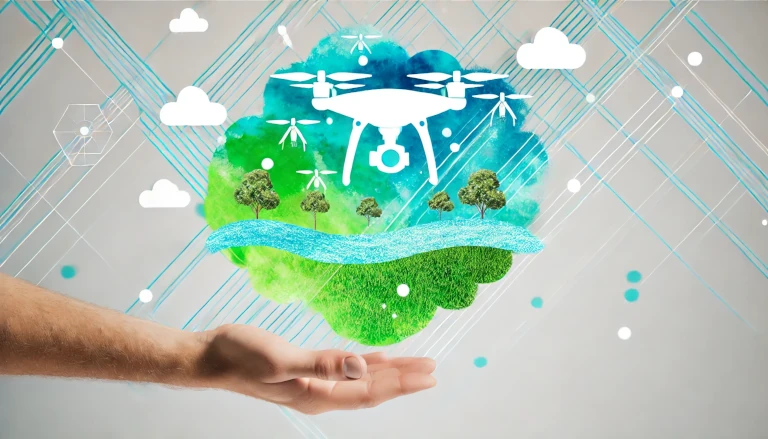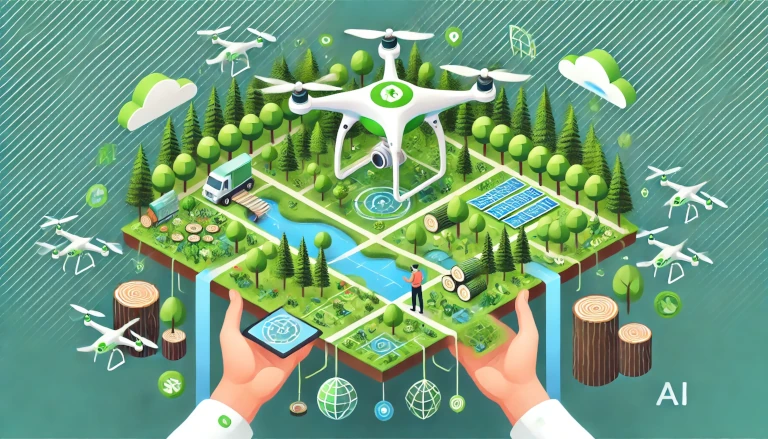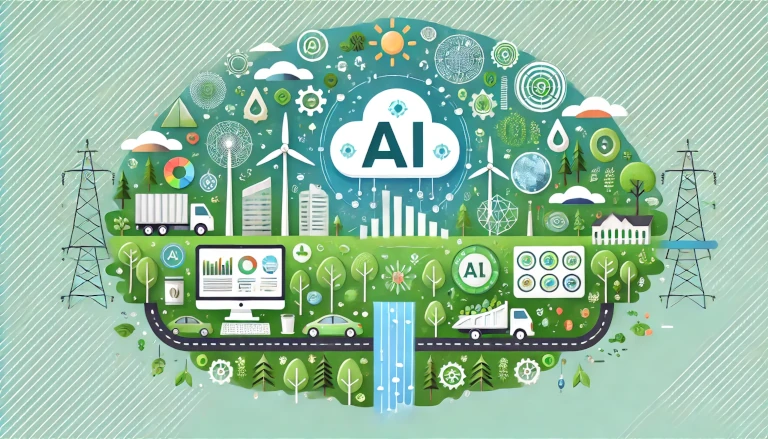As the world faces increasingly complex environmental challenges, technologies like Artificial Intelligence (AI) are becoming essential tools in addressing these issues. AI is particularly helpful in solving environmental problems such as climate change, pollution control, and wildlife conservation. This post will explore how AI contributes to these efforts with real-life examples, showing how technology can lead the way to a more sustainable future.
What is Artificial Intelligence?
Artificial Intelligence (AI) involves the development of computer systems that can mimic human intelligence, including tasks like learning, problem-solving, and pattern recognition. With algorithms, machine learning, and deep learning, AI has the ability to process large amounts of data and improve its performance over time. This ability makes AI a powerful tool for tackling complex environmental problems.
How AI Can Help Solve Environmental Problems
- Climate Change Monitoring and Mitigation
AI helps monitor and predict climate change by processing vast amounts of data collected from satellites, weather stations, and other sources. For instance, NASA uses AI algorithms to analyze satellite data, which enables scientists to track rising sea levels, melting ice caps, and shifts in weather patterns. These predictions help create more accurate climate models, enabling better strategies for climate change mitigation.
- Wildlife Conservation and Habitat Protection
AI-powered technologies are transforming wildlife conservation by tracking endangered species and protecting habitats. Conservation groups use AI-powered camera traps that can automatically identify animals from photographs, helping them monitor wildlife populations more efficiently. For example, Wildlife Insights, a global platform, utilizes AI to analyze images from camera traps, providing valuable data for biodiversity conservation efforts.
- Pollution Control
AI can help combat air and water pollution by using sensors and algorithms to monitor pollution levels in real time. Cities in China, like Beijing, use AI-based air quality monitoring systems to predict air quality levels and make recommendations to reduce industrial emissions. This helps control pollution, ensuring that action is taken before pollution levels reach dangerous thresholds.
- Smart Agriculture and Sustainable Farming
AI is being used in smart agriculture to optimize farming practices, improve yields, and reduce environmental impacts. By analyzing soil conditions, monitoring crop health, and optimizing irrigation systems, AI helps farmers use fewer fertilizers and minimize water waste. Platforms like FarmLogs offer farmers data on soil and weather conditions, allowing them to make better decisions and reduce environmental harm while improving crop production.
- Waste Management and Recycling
AI can also improve waste management by automating the sorting of waste materials. AI-powered robots, like those used by ZenRobotics, can sort recyclables with high accuracy, ensuring that more materials are recycled and fewer go to landfills. This technology helps streamline the recycling process and reduce environmental impact from waste.
- Energy Efficiency and Smart Grids
AI is playing a key role in optimizing energy use. AI-powered systems help manage smart grids, balancing electricity supply and demand in real time. In Germany, for example, AI systems ensure efficient use of renewable energy sources like solar and wind power, optimizing energy storage and distribution.
- Forest Management and Deforestation Prevention
AI can help protect forests by monitoring deforestation and illegal logging activities through satellite imagery analysis. Platforms like Global Forest Watch use AI to track changes in forest cover, providing valuable data to governments and organizations working to stop illegal deforestation activities. This helps reduce habitat destruction and preserve biodiversity.
Real-Life Applications of AI in Solving Environmental Issues
In addition to the examples mentioned above, there are other innovative ways AI is helping to solve environmental challenges. For instance, Google’s AI technology has optimized the cooling systems in its data centers, reducing energy consumption by up to 40%, lowering their overall carbon footprint. Similarly, The Ocean Cleanup Project uses AI-driven systems to map ocean currents and collect plastic waste more efficiently, reducing ocean pollution. IBM’s Green Horizon Project uses AI to predict pollution levels in urban areas, offering strategies to reduce emissions and improve air quality.
Conclusion
Artificial Intelligence is proving to be a vital tool in addressing a wide range of environmental problems. From monitoring climate change to improving energy efficiency, AI technologies provide innovative solutions that can help protect our planet. By integrating AI into environmental efforts, we can move closer to a sustainable future and tackle global challenges more effectively.
Discover more from Green Ecosystem - Renewable Energy, Agriculture, and Environmental Sustainability
Subscribe to get the latest posts sent to your email.


